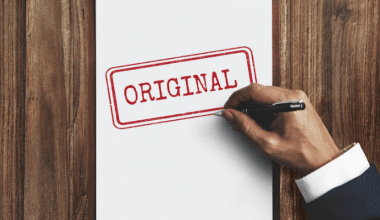A company’s customer retention rate quantifies how many customers it keeps over time. Customer retention metrics are crucial for any business that wants to succeed. Maintaining your current clientele is significantly less expensive than seeking out new ones. Loyal customers also help your company succeed by recommending you to others, spreading the word about you on social media, and offering suggestions for how to make your goods and services better. As a result, companies need to keep an eye on their customer retention rate.
Customer Retention Rate
The quantity of clients a business keeps over a predetermined period is measured by the customer retention rate. It is a measure of how many of a company’s current clients stick with it during that period. The percentage of customers who stick with a company over a specific amount of time is known as customer retention. An 80 percent retention rate, for instance, would be achieved if your company had 10 customers at the beginning of the year and lost two of them. The effectiveness of a company’s marketing strategy and customer service program can be measured by closely observing retention metrics, which are essential for grasping lifetime customer value.
How to Improve Customer Retention Rate
When a business is aware of the proper metrics, it is simpler to integrate marketing and customer service into a larger customer retention strategy. As part of your retention strategy, make sure to incorporate customer feedback. Although it may not be as easy to quantify as a KPI or retention rate, listening to the customers who invest their time and money in your company will help you develop a more rich customer experience that will encourage them to do business with you again. Together, all these customer retention techniques can increase the level of trust that exists between a business and its clients, increasing the likelihood that existing clients will return.
#1. Enhance User Onboarding
The main advantages that a product offers should be made clear to the customer during the onboarding process, according to the business. Training sessions that inform participants of recommended procedures and standardized workflows are a great way to accomplish this. Increasing customer satisfaction and lowering churn over time requires providing your customers with the resources they require for success.
#2. Utilize Client Feedback to Identify Areas for Improvement
Ultimately, whether a customer becomes a devoted follower or abandons the ship depends on how they feel about and perceive your brand. User opinions are crucial, without a doubt. Businesses must ask customers for honest feedback. This can be done through customer feedback forms or a feedback section on the website or platform where customers can leave comments while using the product.
When it comes to prompt response, social media is the preferred medium. Customers demand quick response times and individualized service, and social media is ideally suited for this job. Social media is an excellent tool for addressing potential customer support issues or inquiries right away.
#4. Utilize Automated Emails to Persuade Inactive Users to Act
By encouraging customers to be as active as possible, retention can be improved. An automated email sent by your CRM system can encourage a user who has been inactive for some time to act. Emails may contain instructional material, such as best practice manuals or customer success stories. It works best to use this tactic with users who are not very active.
#5. Upselling to Current Clients
Increasing customer retention among devoted customers through upselling is a great strategy. They become more devoted to your brand when you persuade them that they require a more expensive or superior service.
#6. Recognize Clients Who Are Likely to Leave
Before a user churns, there are frequently several warning signs, among them the level of activity. A company should investigate and determine the cause if a user hasn’t used the product in 30 days. Prioritize your efforts to prevent at-risk users from leaving.
#7. Establish a Customized Customer Loyalty Program
A customer loyalty program is a fantastic way to thank your customers and allow you to get to know them better.
#8. Establish a Referral Program
A referral program can encourage pleased customers and foster greater patronage. You can significantly boost the number of new signups while retaining your current users by providing upgrades, credits, or other extras to current customers.
Making your most dedicated customers into brand advocates will strengthen their emotional bond with your company, which will increase retention.
#9. Enhance Customer Service Offerings
Using a live chat or help desk tool, emphasizing prompt customer service responses, and enticing clients to register for accounts can all aid in boosting client retention.
#10. Create a Sense of Credibility
A company that customers trust has a higher chance of retaining them. Make every effort to earn your customers’ trust and credibility by being open and truthful in all of your business dealings.
Customer Retention Rate Formula
The simple formula below can be used to determine your customer retention rate (CRR) by factoring in the customers you had at the beginning, end, and during the measurement period (S, E, and N). Generally speaking, companies should strive for the highest retention rate possible. In actuality, companies aim to achieve greater than 85%.
Using the following formula, determine the customer retention rate: [(E-N)/S] x 100 = CRR. Customer Retention Rate = [(Number of Customers at End of the period – Number of New Customers During period) / (Number of Customers at Start of the period)] x 100
A large customer base with happy customers who are having a good experience is typically indicated by a high customer retention rate.
For instance, Let’s imagine that you are tracking the month-over-month customer retention rate for your SaaS business. 250 new customers were added after you started the period with 1,250 subscribers. The final day of the period saw 1,500 subscribers for your company.
You would determine your customer retention rate in the following manner:
Customer Retention Rate = [(1,500 – 250)/1,500] x 100
As a result, 83.3% of your customers are still with you. Therefore, 83.3% of your current clientele has remained loyal throughout the entire month and into the following. As a result, your customer churn rate—or, put another way, how many customers you lost in that particular month—is also approximately 16.7%.
How to Calculate Customer Retention Rate
When you have this information, you can enter it into the formula for the retention rate. Some businesses assess retention every year, every three or four months, every month, or every week.
Your retention rate will be calculated using
- First, decide on the period you want to research.
- Next, count how many customers were already there at the beginning of the time frame (S).
- Then calculate the total number of customers after the period (E).
- Lastly, calculate the number of new clients brought on during the time frame (N).
Average Customer Retention Rate by Industry
#1. Media: 84%
Media businesses concentrate on huge clientele, much like retailers do. These businesses have substantial marketing and retargeting budgets, which help to maintain a high retention rate despite the potential difficulty they may have in personalizing their products.
#2. Professional Services: 84%
Professional service providers put a lot of effort into forming close bonds with their customers. As a result, the retention rate remains high. They place a strong emphasis on the uniqueness of each client, making the services they provide essential to their success.
#3. Insurance: 83%
Numerous factors affect the insurance industry’s retention rate. Sometimes a high rate does not represent a healthy business. It’s crucial to consider the length of time customers remain customers of the business and the retention rate over the acquisition period. To retain customers, insurance companies increase their clients’ spending power and make it more difficult for them to leave.
#4. IT Services: 81%
High retention rates in the IT industry are a result of top businesses placing a strong emphasis on client success. In general, results from IT services come in a short time. Failure to satisfy the client’s expectations foretells a high churn rate and a damaged reputation.
#5. Telecom: 78%
The “difficult to leave” factor is thought to contribute to the high retention rate in the American telecom sector. These businesses prioritize customer loyalty initiatives and increase reward options. They also create lengthy contracts, which makes it more difficult for customers to ignore their wrongdoing.
There isn’t much diversity in the competition in some areas of the telecom industry, like wireless carriers. Since the services and benefits offered by the best companies are comparable, switching is pointless.
#6. Retail: 63%
The retail sector has a relatively low retention rate when compared to other leading examples. Both the high level of competition and the ease of leaving are contributing factors.
There are so many options available to shoppers in the retail sector that they are practically flooded. Businesses put a lot of effort into shifting customers from one brand to another. In the meantime, there are a ton of leads in this sector.
Importance of Customer Retention
Keeping your current clientele is frequently much less expensive than finding new ones. Costs associated with customer service and ongoing satisfaction are typically significantly higher than those associated with sales and marketing acquisition.
Repeat business is common among loyal clients, which makes them worthwhile. Increasing the number of customers you keep increases the likelihood that they’ll become devoted, repeat customers and can greatly boost your bottom line. Referral business from content customers is frequently the source of new business.
A company may lose out on repeat business if it only focuses on growing its customer base and ignores customer retention. Although the procedure for acquiring new customers, also known as customer acquisition, is crucial, it is also significantly more expensive. Just as crucial a process as acquiring new clients is keeping existing clients and converting them into loyal patrons.
Additional Metrics to Monitor for Customer Retention
#1. Revenue Churn
The idea behind revenue churn is similar to that of customer churn. It provides you with information on how much money—rather than users—your business has lost as a result of customer cancellations or downgrades over a specific period.
Revenue Churn = (Net Revenue Lost in a period / Total Revenue in a Period) x 100
#2. Repeat Purchase Rate
The percentage of clients who have made additional purchases is known as the repeat purchase rate. Retail and e-commerce businesses will find this to be especially helpful.
Repeat Purchase Rate = (Number of Repeat Customers / Total Customers) x 100
It’s useful to keep track of how many customers return to your business after making a purchase rather than visiting a big-box retailer or a rival.
#3. Net Promoter Score (NPS)
The Net Promoter Score (NPS) is a tool used by businesses to gauge client loyalty and the propensity of current clients to recommend them to others.
This information is gathered using a straightforward one-question survey that is frequently sent out immediately following a transaction, such as “How likely are you to recommend us?
After that, the responses are divided into category ranges.
- 9–10: These are your “Promoters,” the clients who are most likely to recommend you to their friends and family.
- 7-8: These are “Passives,” customers who are moderately loyal to a business and may change if they come across a better offer.
- 0–6: These are your “Detractors,” or customers who are most likely to criticize your business and leave.
What Is a Good Customer Retention Rate
Depending on the industry, there are different middle points. The industry determines what constitutes a good customer retention rate. For instance, a customer retention rate of 90% or higher is frequently regarded as favorable in the subscription-based services sector. The best course of action is to model your retention goals after those of companies in your industry.
What Does It Mean to Increase Retention Rate?
Gaining more clients who remain steadfast customers will increase your retention rate.
What Does an Increase in Retention Rate Mean?
Profits can rise directly by 25% to 95% when you raise retention rates by even a small percentage, such as 5%. In general, a higher retention rate is preferable because users who are more engaged and present for longer periods present more monetization opportunities.
What Happens When Retention Rate Increases?
In general, a higher retention rate is preferable because users who are more engaged and present for longer periods present more monetization opportunities.
What Is Meant by an Increase of 5% Retention Rate?
More than 25% to 95% of a company’s sales are generated by a 5% increase in customer retention, and 65% of those sales are made by repeat customers. increase in profit. The fact that long-term users of your product are more likely to be loyal and trusting of your business is one explanation for this.
Is a 90% Retention Rate Good?
Considering that a good retention rate is 90% or higher, businesses should aim for an average employee turnover rate of 10% or lower.
What Does 10% Retention Mean?
A 10% retention rate indicates retention problems because it indicates that 9 out of 10 customers aren’t returning.
Conclusion
Customer retention is the percentage of clients who stick with a company over a quantifiable period. Because retaining customers is more economical for businesses than acquiring new ones, customer retention is a top concern for most businesses. Customer retention ought to be a primary objective for almost all businesses, not just a crucial metric. In general, a company’s success depends on how well it retains its customers. The higher the retention rate, the more devoted its customers are. After that, implement guidelines to raise that rate and keep more clients.
Related Articles
- CUSTOMER RETENTION: Definition, Strategies, Rate, Formulae & Importance
- EMPLOYMENT RETENTION: Definition, Strategies, Tax Credits, and Rates
- EMPLOYEE RETENTION RATE: How to Calculate It and Things You Must Know
- CUSTOMER RETENTION STRATEGIES: Meaning and Effective Strategies for Customer Retention
- RETENTION RATE: What Is It, Formula, How to Calculate It & Difference






